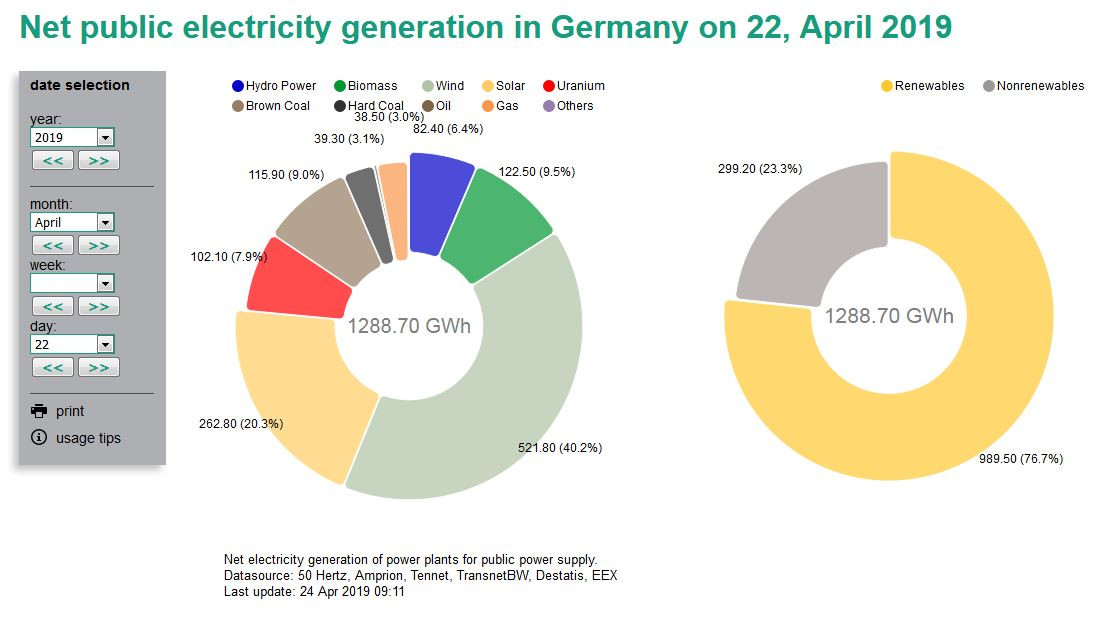Renewables hit record 77 percent of German power on Easter Monday
Renewable energy sources generated 77 percent of Germany’s net public power supply on 22 April, thanks to strong winds and abundant sunshine, according to Fraunhofer ISE. Wind power provided 40 percent of total net power, solar 20 percent, and biomass 10 percent.
The institute’s Energy Charts project does not include data on the amount of power the generating facilities consume themselves to operate, or the power German industry produces and consumes without it being fed into the public grid. Fraunhofer ISE says their data represents the power mix that actually supplies German homes.
At around midday on Easter Monday, renewables covered almost all of Germany’s power needs, according to preliminary data from think tank Agora Energiewende.* Data by energy company E.ON even suggests that renewables covered more than the country's needs, as does data by provided by the Federal Network Agency (BNetzA) on the SMARD online platform.
Conventional power plants were throttled significantly at that time, but ISE’s Bruno Burger told PV Magazine generation from nuclear, gas and especially lignite could have been reduced still further. “That would have also kept wholesale prices from dropping so much,” Burger said.
Previous record renewables shares were reached on 8 December 2018 (75 percent) and 24 December 2017 (74 percent), Burger told Clean Energy Wire.
Germany was not the only country with record news over Easter: The UK broke its record of continuous coal-free power generation, going more than 90 hours without coal over the weekend, the BBC reports.
Germany aims to cover 65 percent of its power demand by 2030 (37.8 percent in 2018). The exact share of renewables on any given day remains uncertain for some time – and may never be entirely confirmed – because precise data on power generation and consumption is published with several months’ delay.
*Like the Clean Energy Wire, Agora Energiewende is a project funded by Stiftung Mercator and the European Climate Foundation.


